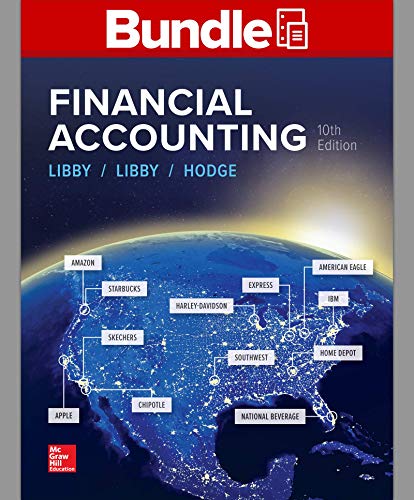
1.
Compute the amount of dividends, in total and per share, that would be payable to each class of stockholder’s for each case.
1.
Explanation of Solution
Preferred stock:
The stock that provides a fixed amount of return (dividend) to its stockholder before paying dividends to common stockholders is referred as preferred stock.
Common stock:
These are the ordinary shares that a corporation issues to the investors in order to raise funds. In return, the investors receive a share of profit from the profits earned by the corporation in the form of dividend.
Retained earnings are the portion of earnings kept by the business for the purpose of reinvestments, payment of debts, or for future growth.
Cash dividends:
The amount of cash provided by a corporation out of its distributable profits to its shareholders as a return for the amount invested by them is referred as cash dividends.
Compute the amount of dividends, in total and per share, that would be payable to each class of stockholder’s for each case:
Case A: Preferred is noncumulative and the total amount of all dividends is $31,000.
| Particulars |
Preferred Stock of 8,000 shares (Amount in $) |
Common Stock of 35,000 shares (Amount in $) |
Total (Amount in $) |
| 12,000 | 12,000 | ||
| Balance carried to common stock | (1)19,000 | 19,000 | |
| 12,000 | 19,000 | 31,000 | |
| Per share value | (2) 1.50 | (3) 0.54 |
(Table 1)
Working Notes:
Balance carried to common stock = (Total amount of all dividends −Preferred shares)=$31,000−$12,000=$19,000 (1)
Per share value of perferred stock of 8,000 shares} = DividendPerferredstock=$12,0008,000 Shares=1.50 (2)
Per share value of common stock of 35,000 shares} = DividendCommon stock=$19,00035,000 Shares=0.54 (3)
Case B: Preferred is cumulative and the total amount of all dividends is $36,000.
| Particulars |
Preferred Stock of 8,000 shares (Amount in $) |
Common Stock of 35,000 shares (Amount in $) |
Total (Amount in $) |
| Preferred shares: | |||
| Arrears ($120,000×10%×2years) | 24,000 | 0 | 24,000 |
| Current year ($120,000×10%) | 12,000 | 0 | 12,000 |
| 36,000 | 0 | 36,000 | |
| Per share value | (4) 4.50 | 0 |
(Table 2)
Working Notes:
Per share value of perferred stock of 8,000 shares} = DividendPerferredstock=$36,0008,000 Shares=4.50 (4)
Case C: Preferred is cumulative and the total amount of all dividends is $90,000.
| Particulars |
Preferred Stock of 8,000 shares (Amount in $) |
Common Stock of 35,000 shares (Amount in $) |
Total (Amount in $) |
| Preferred shares: | |||
| Arrears ($120,000×10%×2years) | 24,000 | 0 | 24,000 |
| Current year ($120,000×10%) | 12,000 | 0 | 12,000 |
| Balance of common stock | 0 | 54,000 | 54,000 |
| 36,000 | (5) 54,000 | 90,000 | |
| Per share value | (4) 4.50 | (6)1.54 |
(Table 3)
Working Notes:
Balance carried to common stock = (Total amount of all dividends −Preferred shares)=$90,000−$36,000=$54,000 (5)
Per share value of common stock of 35,000 shares} = DividendCommon stock=$54,00035,000 Shares=1.54 (6)
2.
Explain the manner by which stock dividend will be compared to case C if company issues a 30% common stock dividend on the outstanding shares and if the market value per share is $24.
2.
Explanation of Solution
| Schedule of Comparative Differences | ||
| Item | Amount of Dollar Increase (Decrease) | |
| Cash Dividend – Case C | Stock Dividend | |
| Assets | There is a decrease in the value of cash by $90,000. | No change |
| Liabilities | The liabilities increase by $90,000 when cash dividend is declared and it decreases during the payment of cash dividend. | No change |
| Retained earnings of the company reduce by $90,000. |
Stockholder’s equity will not change on declaration of stock dividend. The retained value gets reduced due to declaration of dividend and there will be equal increase in the value of common stock $84,000 (35,000×30%×$8). | |
(Table 4)
Want to see more full solutions like this?
Chapter 11 Solutions
FINANCIAL ACCOUNTING (LL)-W/CONNECT
- Pedro Manufacturing expects overhead costs of $360,000 per year and direct production costs of $15 per unit. The estimated production activity for the 2023 accounting period is as follows: 1st 2nd 3rd 4th Quarter Units Produced 10,000 9,500 8,000 10,500| The predetermined overhead rate based on units produced is (rounded to the nearest penny): a. $9.47 per unit b. $10.00 per unit c. $8.05 per unit d. $11.25 per unitarrow_forwardPlease provide the answer to this general accounting question with proper steps.arrow_forwardCan you solve this general accounting question with accurate accounting calculations?arrow_forward
- On March 1, 20X1, your company,which uses Units-of-Production (UOP) Depreciation, purchases a machine for $300,000.arrow_forwardPlease provide the accurate answer to this general accounting problem using valid techniques.arrow_forwardI am searching for the right answer to this financial accounting question using proper techniques.arrow_forward

 AccountingAccountingISBN:9781337272094Author:WARREN, Carl S., Reeve, James M., Duchac, Jonathan E.Publisher:Cengage Learning,
AccountingAccountingISBN:9781337272094Author:WARREN, Carl S., Reeve, James M., Duchac, Jonathan E.Publisher:Cengage Learning, Accounting Information SystemsAccountingISBN:9781337619202Author:Hall, James A.Publisher:Cengage Learning,
Accounting Information SystemsAccountingISBN:9781337619202Author:Hall, James A.Publisher:Cengage Learning, Horngren's Cost Accounting: A Managerial Emphasis...AccountingISBN:9780134475585Author:Srikant M. Datar, Madhav V. RajanPublisher:PEARSON
Horngren's Cost Accounting: A Managerial Emphasis...AccountingISBN:9780134475585Author:Srikant M. Datar, Madhav V. RajanPublisher:PEARSON Intermediate AccountingAccountingISBN:9781259722660Author:J. David Spiceland, Mark W. Nelson, Wayne M ThomasPublisher:McGraw-Hill Education
Intermediate AccountingAccountingISBN:9781259722660Author:J. David Spiceland, Mark W. Nelson, Wayne M ThomasPublisher:McGraw-Hill Education Financial and Managerial AccountingAccountingISBN:9781259726705Author:John J Wild, Ken W. Shaw, Barbara Chiappetta Fundamental Accounting PrinciplesPublisher:McGraw-Hill Education
Financial and Managerial AccountingAccountingISBN:9781259726705Author:John J Wild, Ken W. Shaw, Barbara Chiappetta Fundamental Accounting PrinciplesPublisher:McGraw-Hill Education





